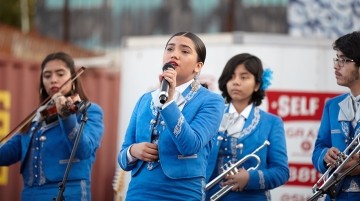Most schools are not designed to educate today’s students to face the challenges of our time. Too many young people still experience the factory-style model of learning prevalent in U.S. high schools, which emphasizes uniformity, efficiency, and rote learning. There are schools that have been successfully redesigned to prepare students for a global workforce, and they offer a powerful blueprint for creating learning environments that are more humane, enriching, and productive than our current models.
In this session, community schools in neighborhoods experiencing rapid demographic changes and high concentrations of poverty shared how they redesigned the high school experience to be student-centered, asset-based, and culturally responsive.
This is the seventh webinar in a seven-part series outlining evidence-based features of high schools that have been effectively redesigned based on a whole child education framework that can transform student learning.
Learn more about the series ▸
Speakers
- Amanda Bean, Director, Career Preparedness Systems Framework Implementation, Anaheim Union High School District
- Yamila Castro, Spanish Teacher, Community Schools Teacher Lead, and World Languages Department Chair, Western High School
- Bindi Crawford, Principal, Anaheim Union High School District
- Ann Rice, Science Teacher and 5C Coach, Orangeview Junior High School
- Jorge Ruiz de Velasco, Deputy Director and Senior Research Associate, John W. Gardner Center for Youth and Their Communities, Stanford Graduate School of Education
- Marisa Saunders, Associate Director for Research, UCLA Center for Community Schooling
